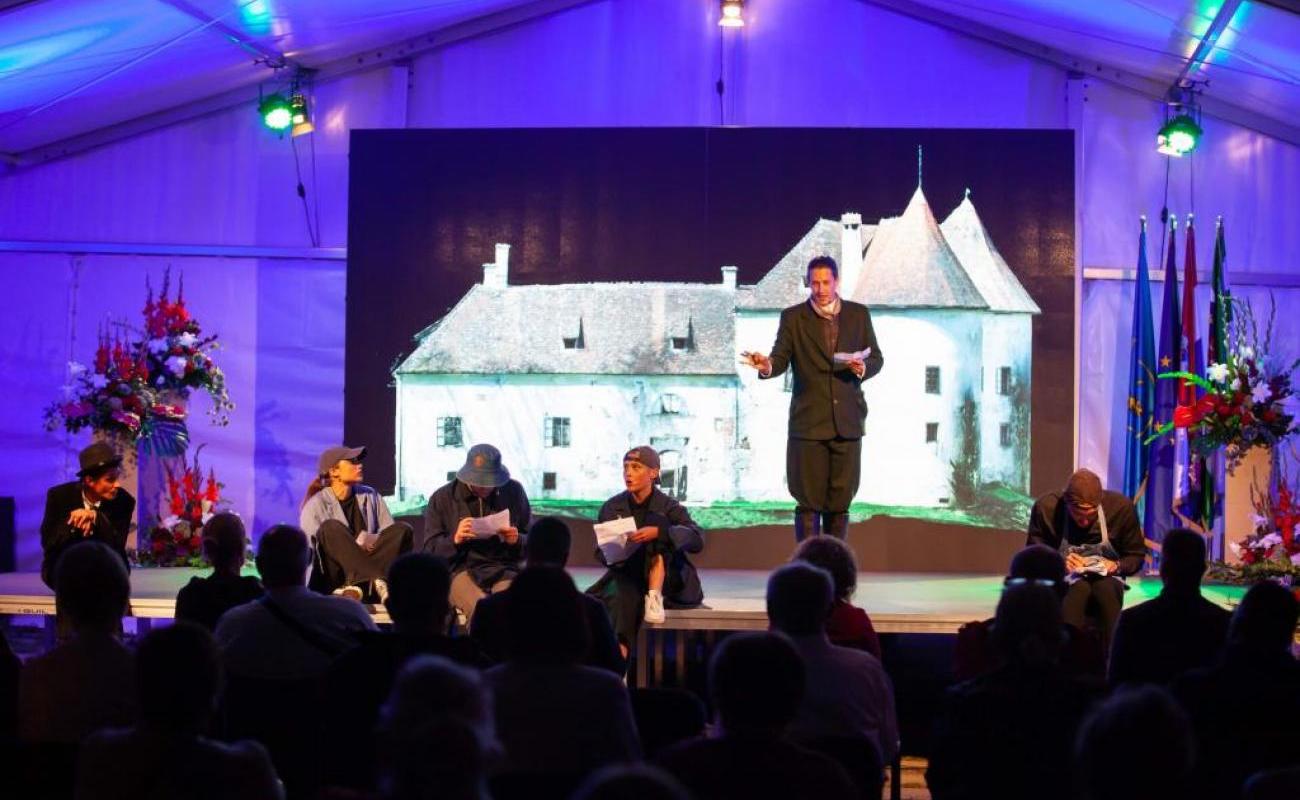Jastrebarsko to renovate Erdödy Castle with EUR 9.8 million project
The renovation will be co-financed by the European Union

On 27 August, the Croatian City of Jastrebarsko presented its plans to renovate and revitalise the oldest building in the area: the Erdödy Castle. The renovation project is worth a total of HRK 73,639,686.93 (over EUR 9.8 million) and is co-financed by the EU’s European Regional Development Fund.
The presentation of the project featured performances by artists from the Academy of Dramatic Arts – University of Zagreb. During their acts, the performers embodied figures such as Count Erdödy and reminded citizens of the castle’s history. Moreover, they presented the building as a valuable cultural asset and a symbol of Jastrebarsko.
Built between 1483 and 1489, the Erdödy Castle is one of the most famous landmarks in the area. The Erdödy family bought the castle in the first half of the 16th century, selling it to the wholesaler Ehrman many years later in 1922. Soon after, Ehrman went bankrupt, allowing the municipality to buy the castle at an auction in 1936. Now, centuries after it was first built, the castle will be restored and revitalised.
What is the vision behind the project?
According to a press release by the Croatian city, the renovation of the old building has several objectives. First, it seeks to preserve and restore cultural heritage and create new values.
Second, it aims to make the castle more accessible to people of all ages and abilities as the renovation project envisions the installation of new infrastructure. Third, it wants to prevent further deterioration and create new opportunities.
More specifically, the City of Jastrebarsko envisions the creation of a space that has multiple public, socio-cultural, economic, and tourist purposes. With the help of the EU, this vision can finally be realised. Commenting on this, Mayor of Jastrebarkso Zvonimir Novosel shared:
“We have been waiting for the reconstruction since the 1980s and I am proud that we managed to withdraw European funds for its reconstruction because we would not be able to finance it ourselves. In this way, we will receive 67 percent of the funds from the European Union, and the rest will be provided by the City so that all citizens can enjoy its beauties, given that at least 80 percent of the castle will be available to the public, while the remaining 20 percent can be commercialised.”
